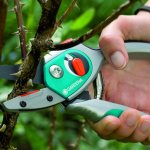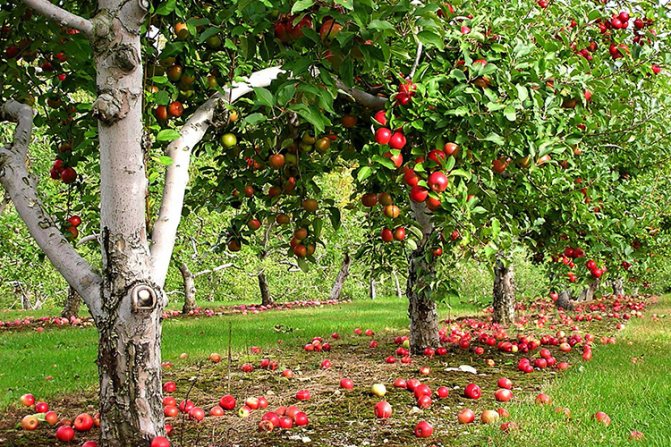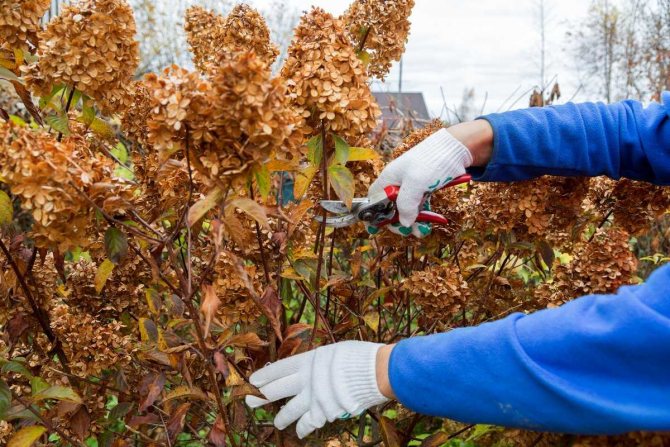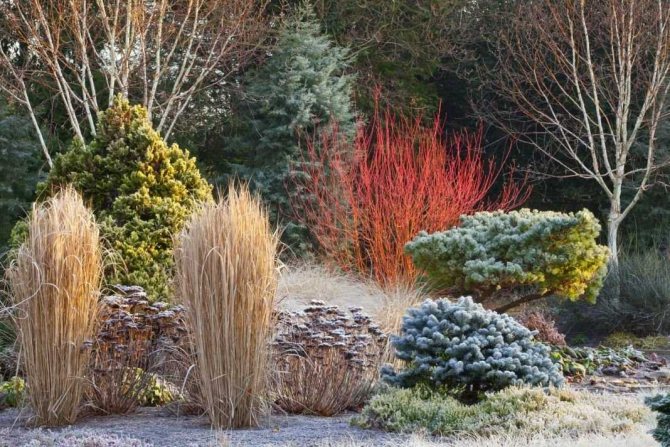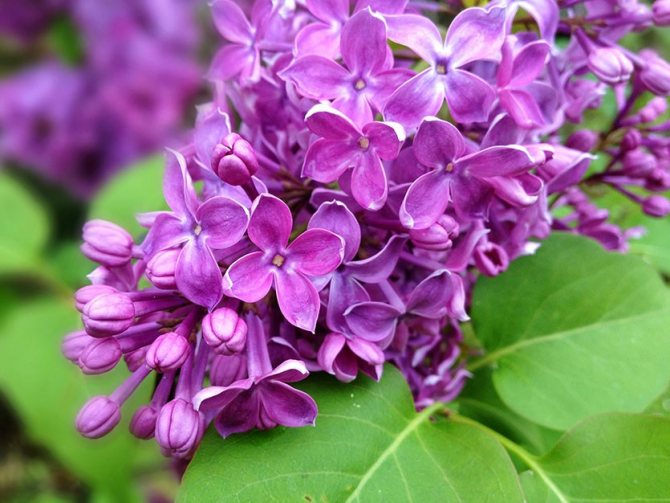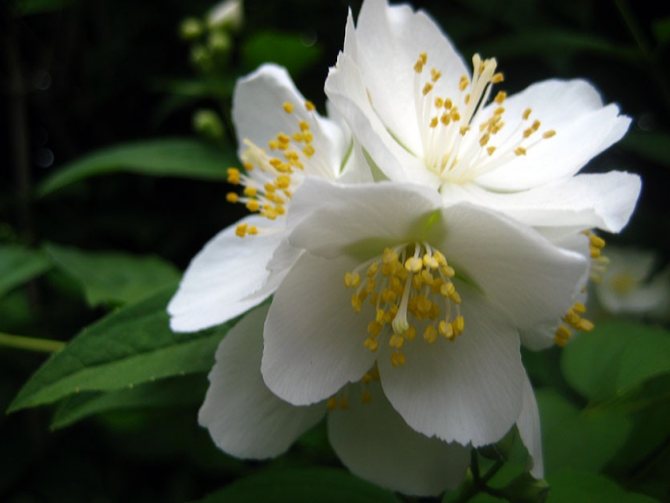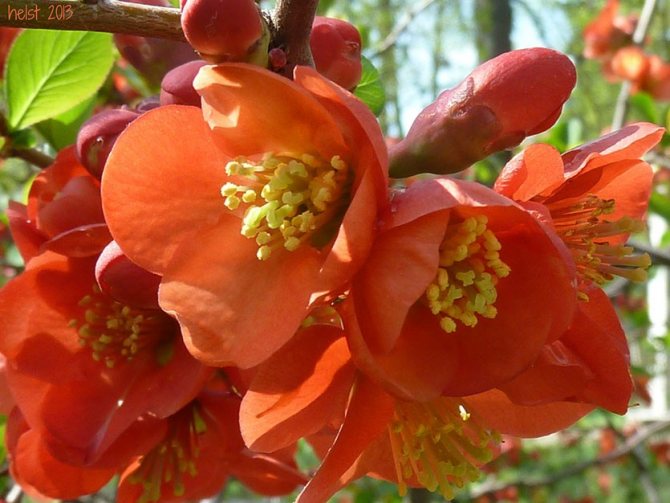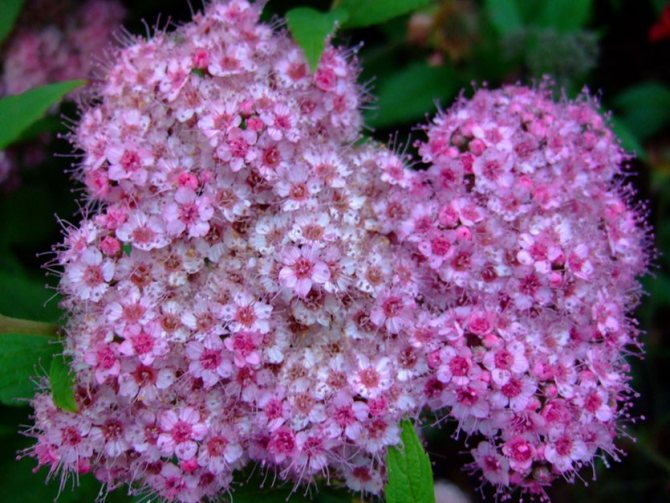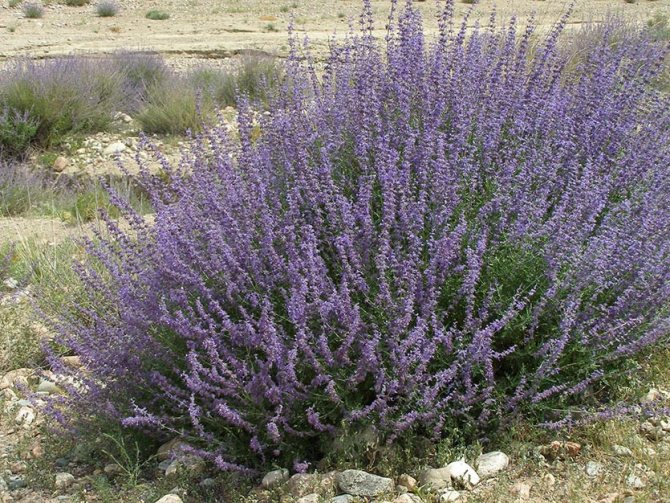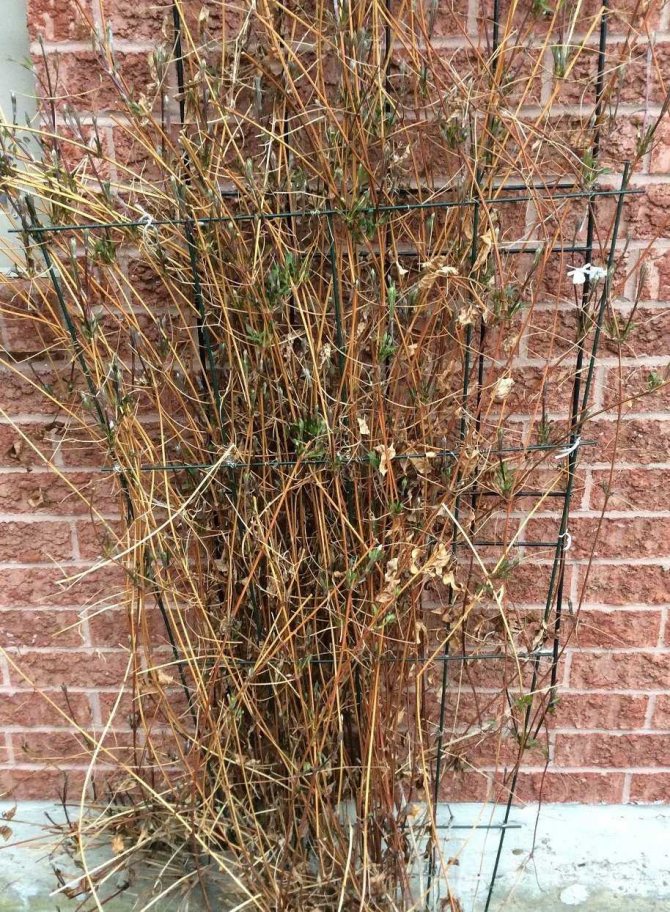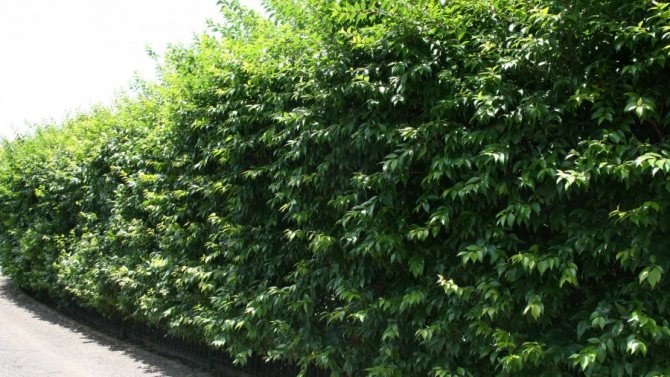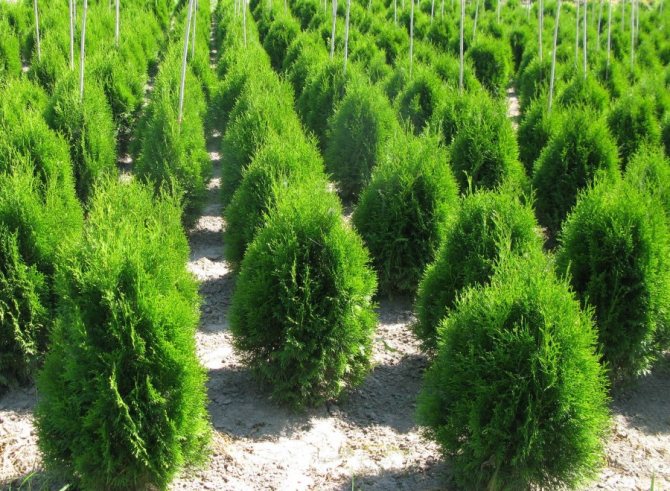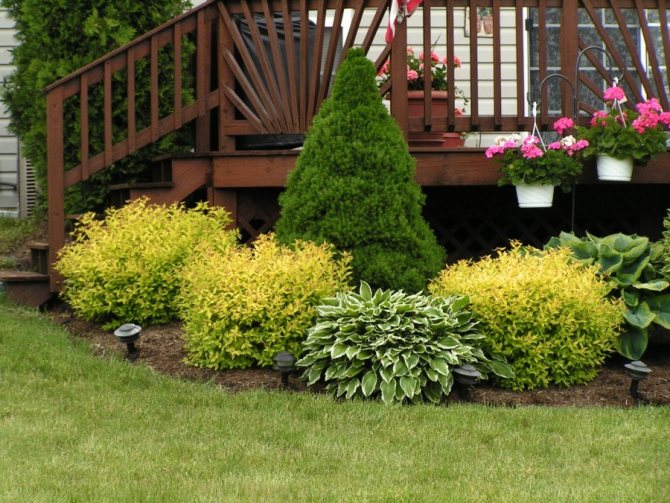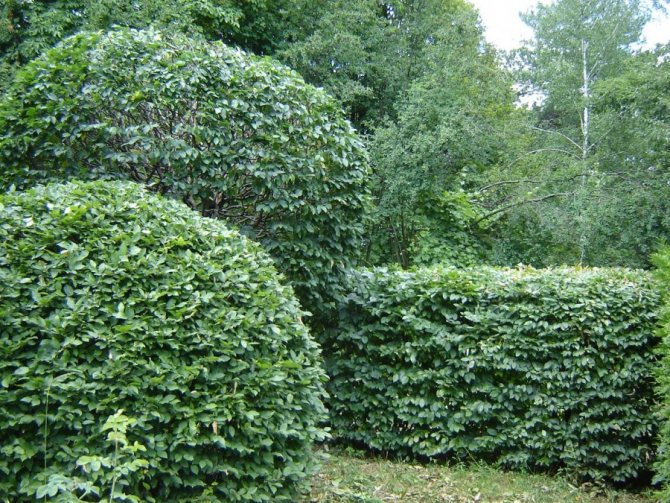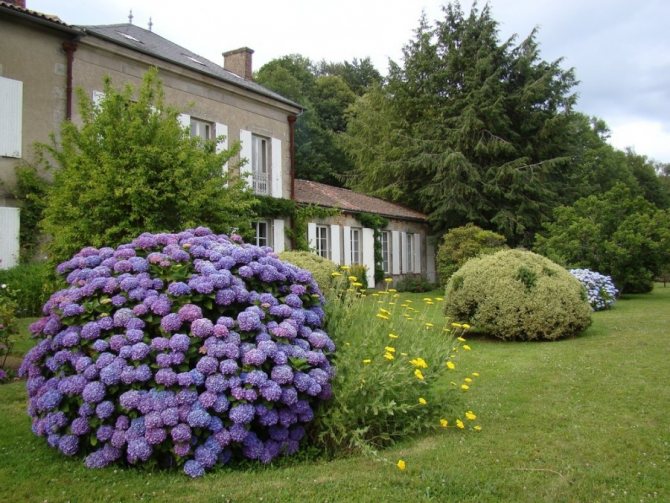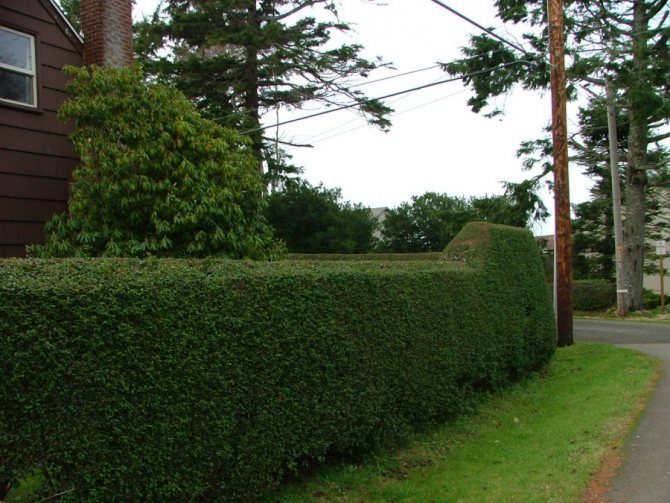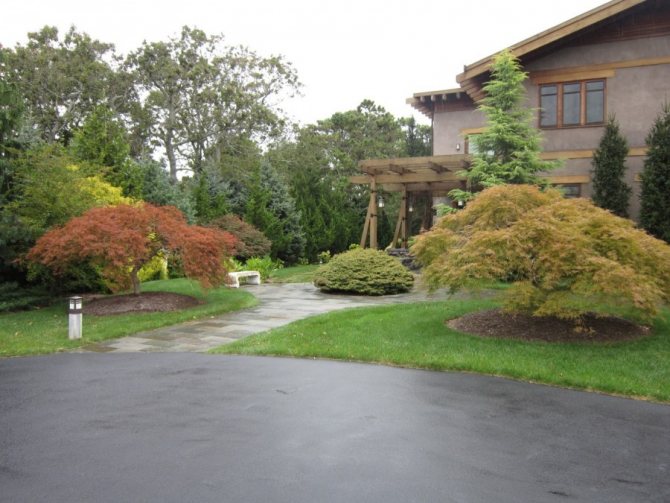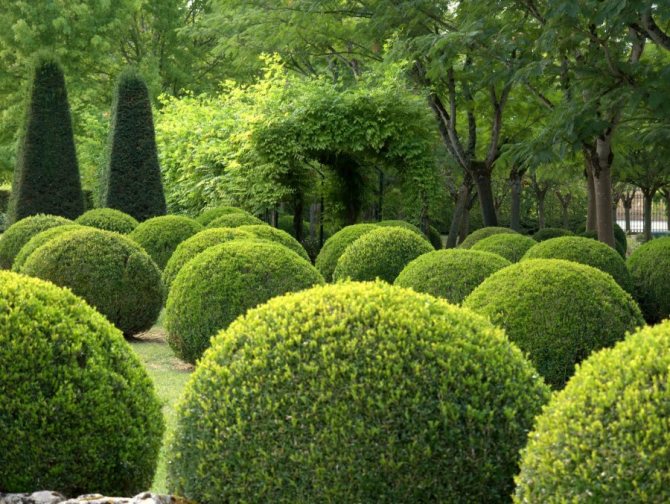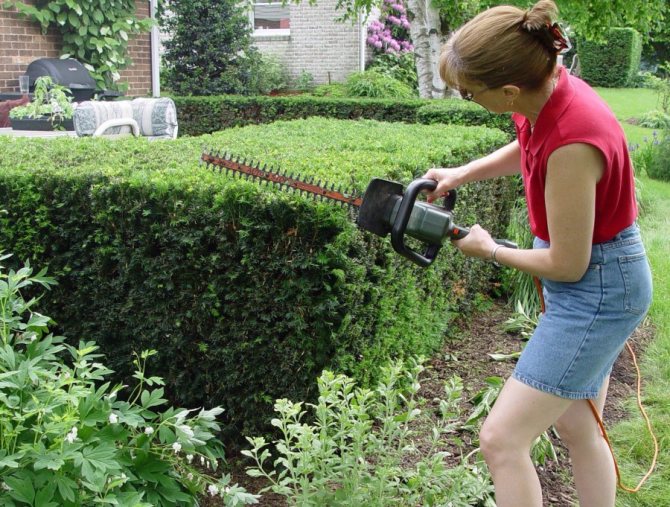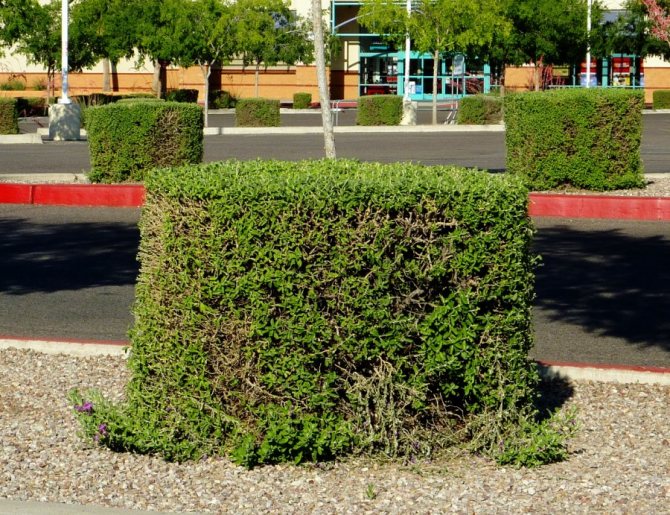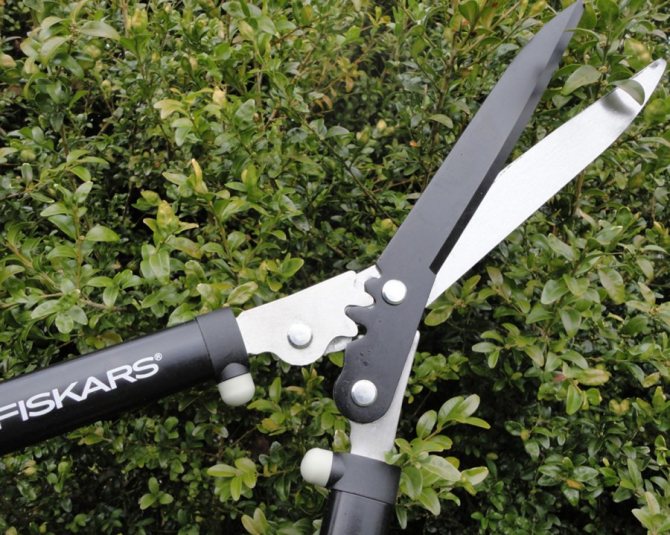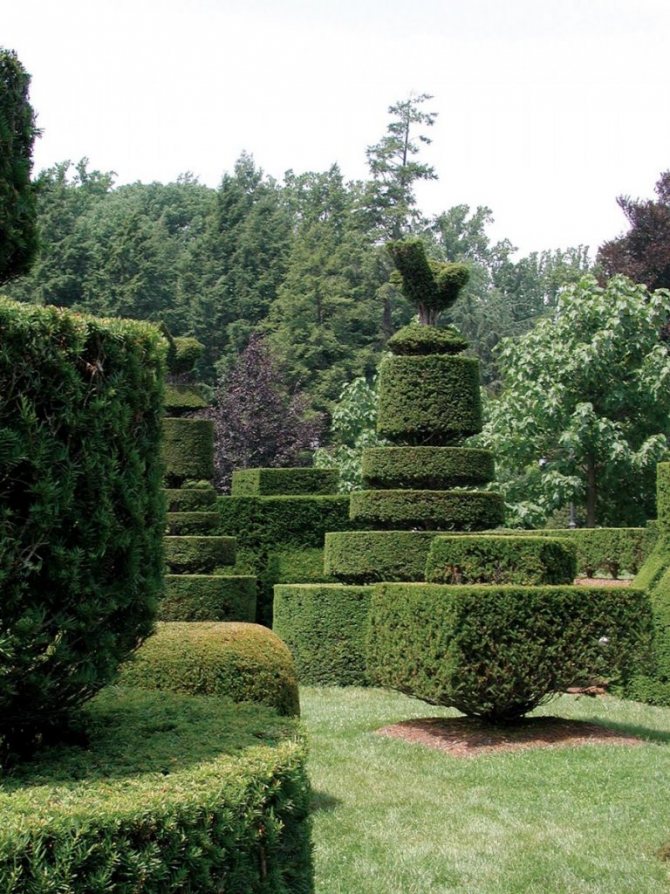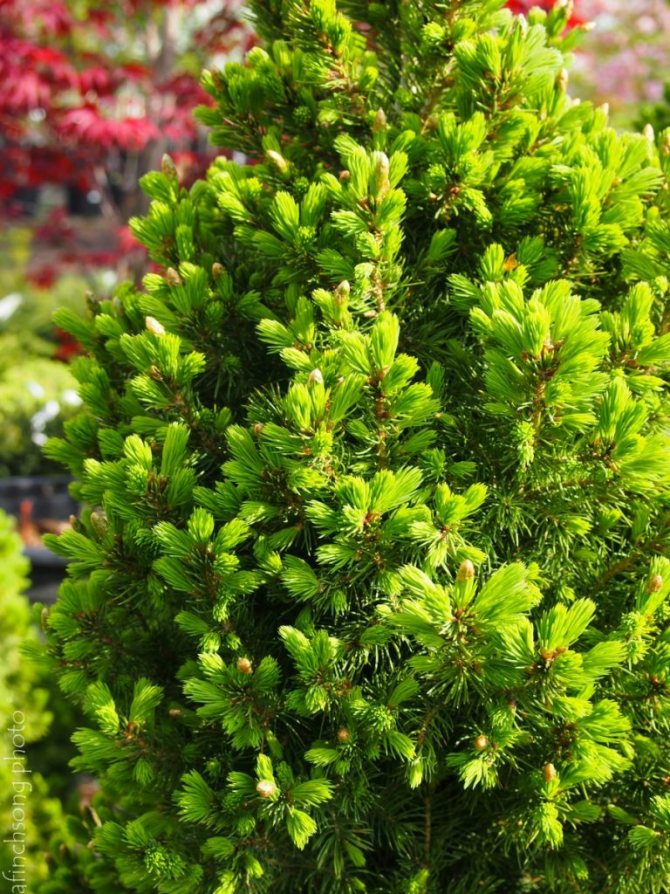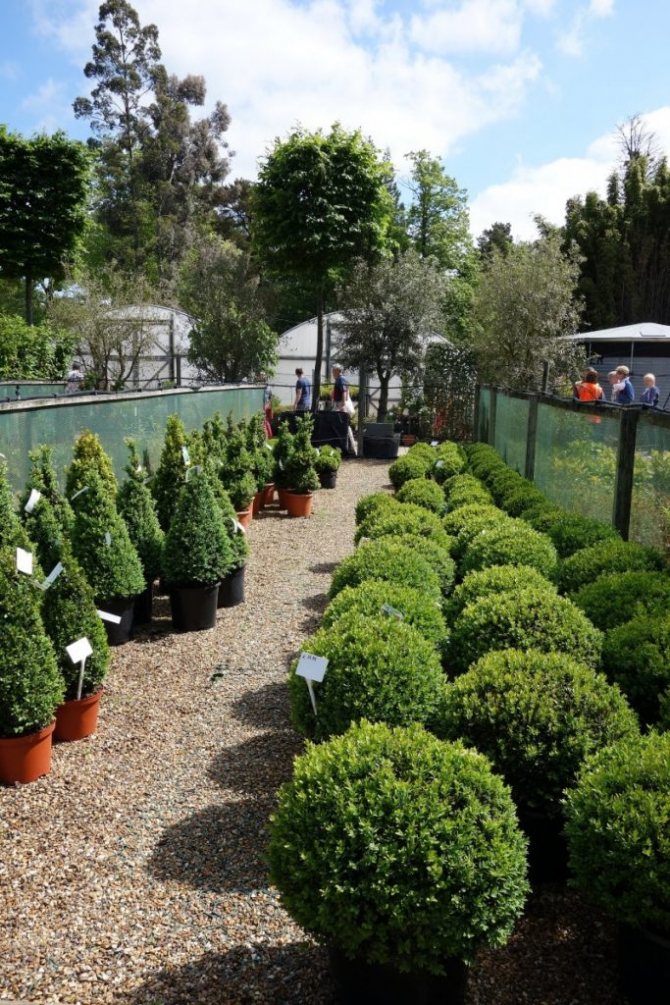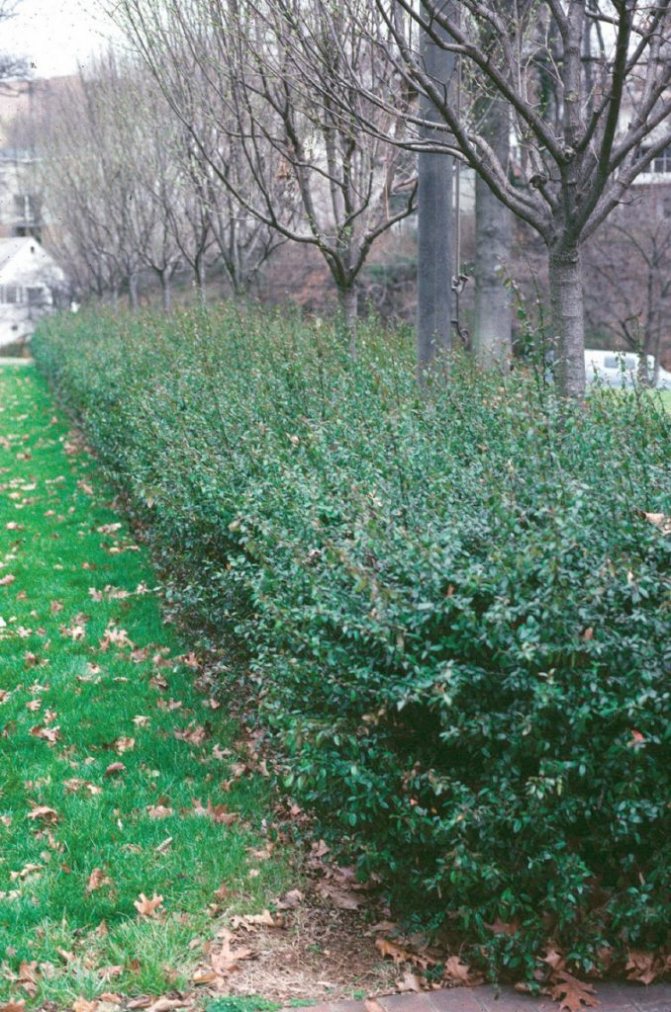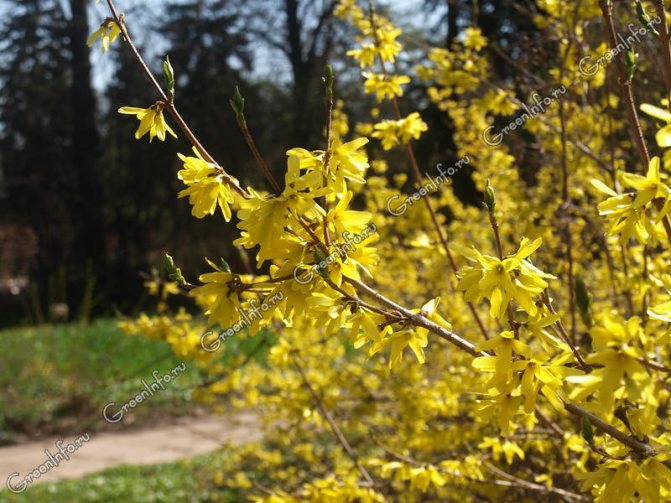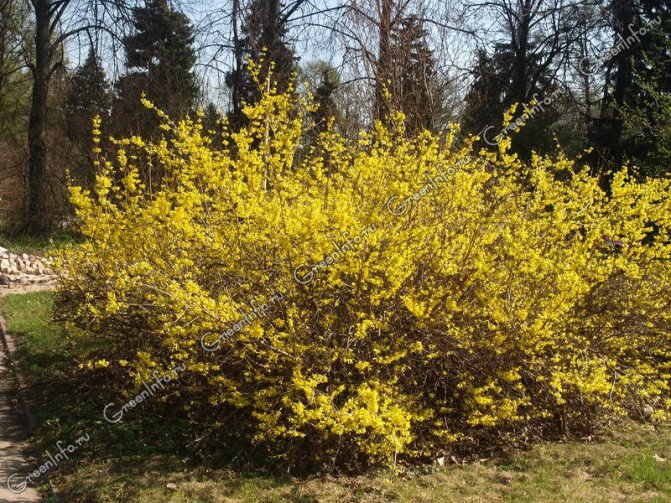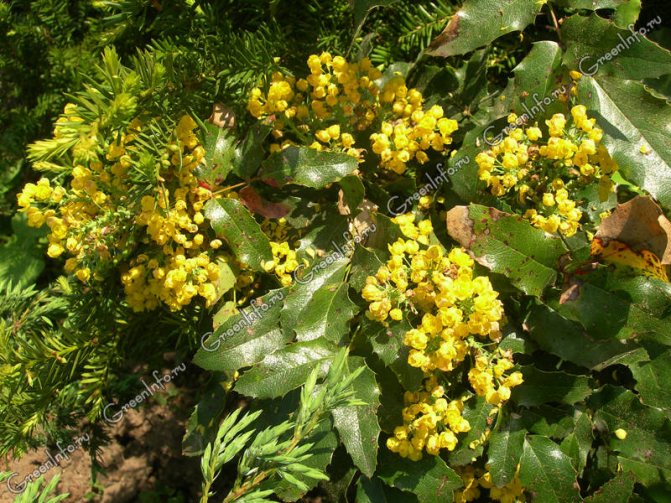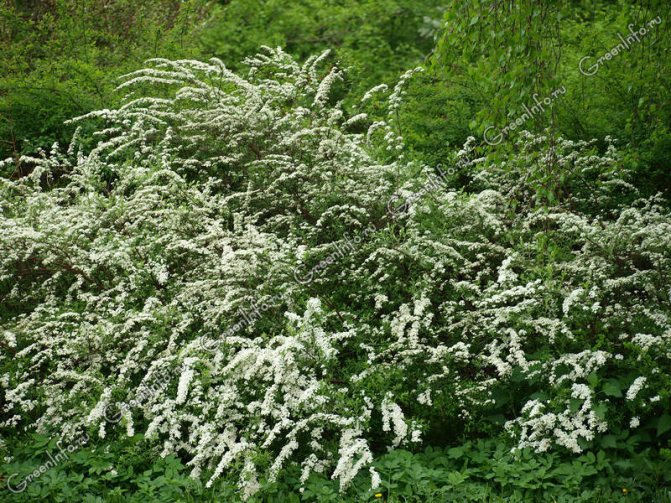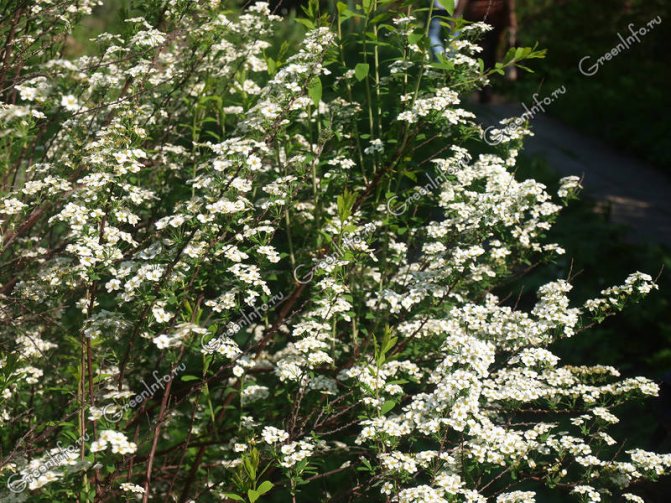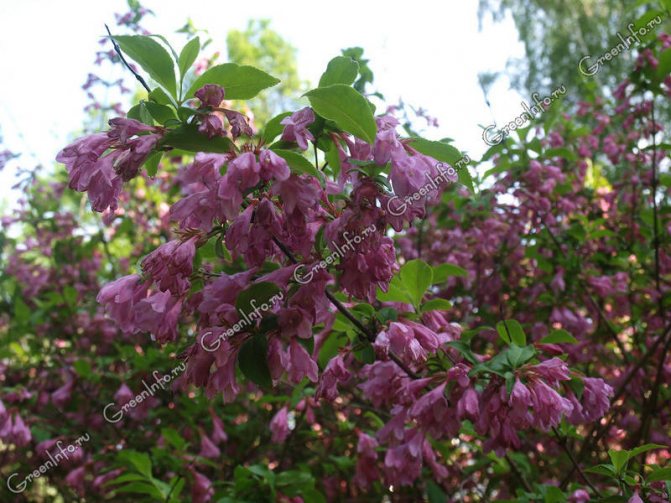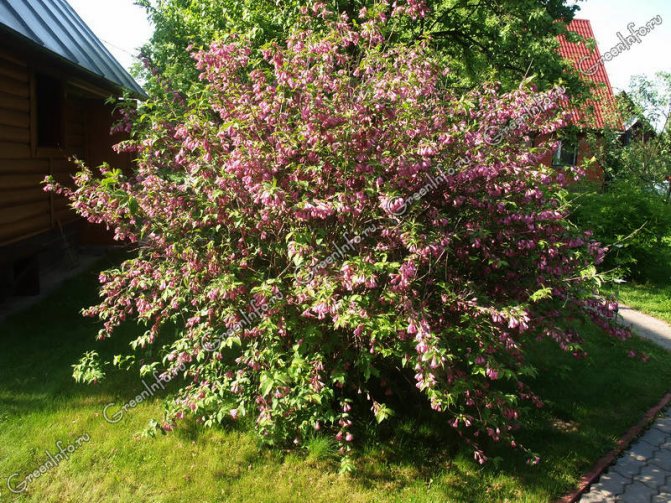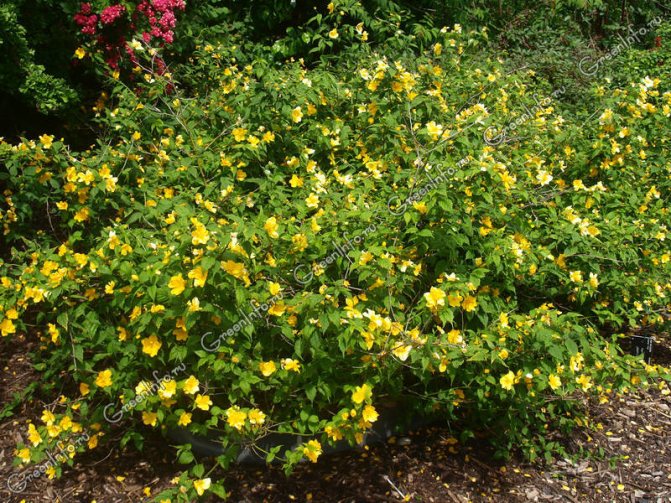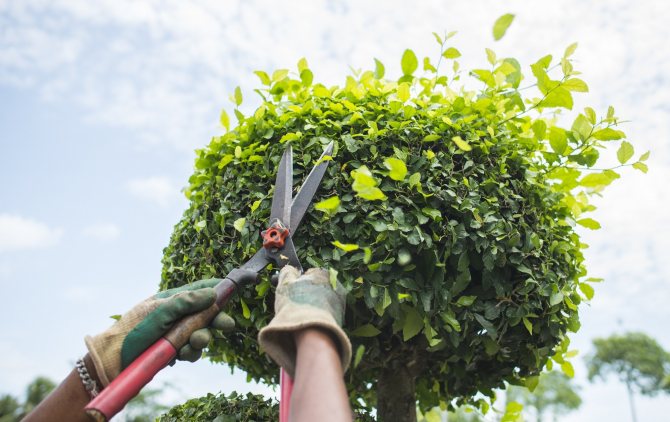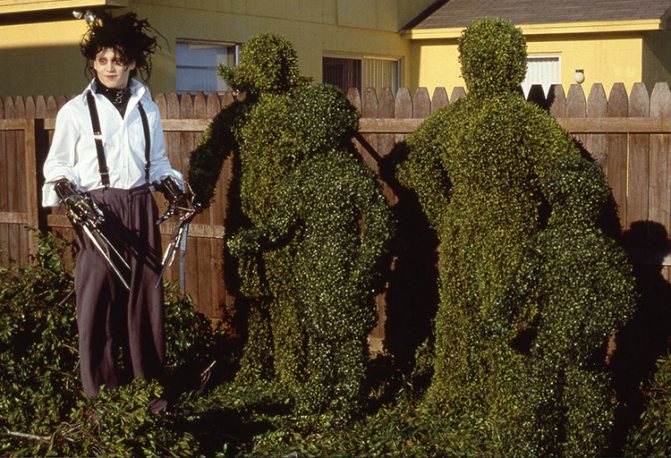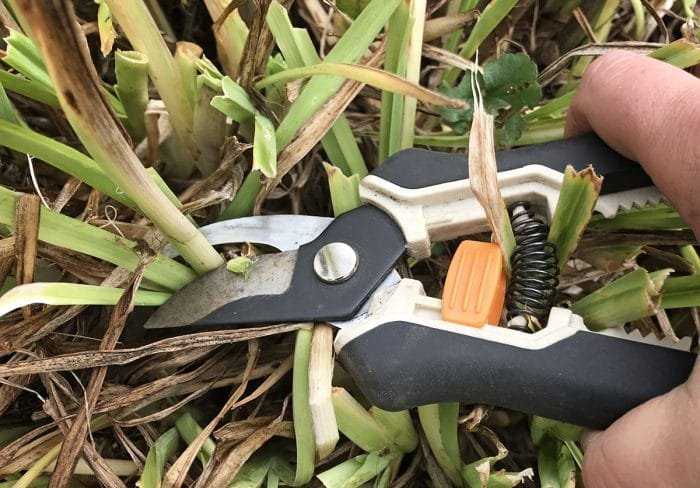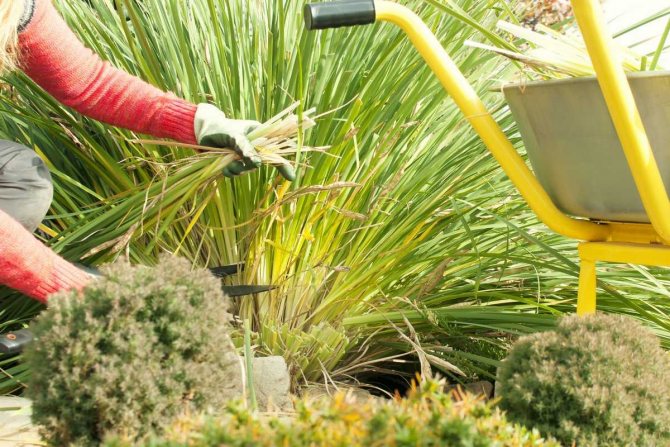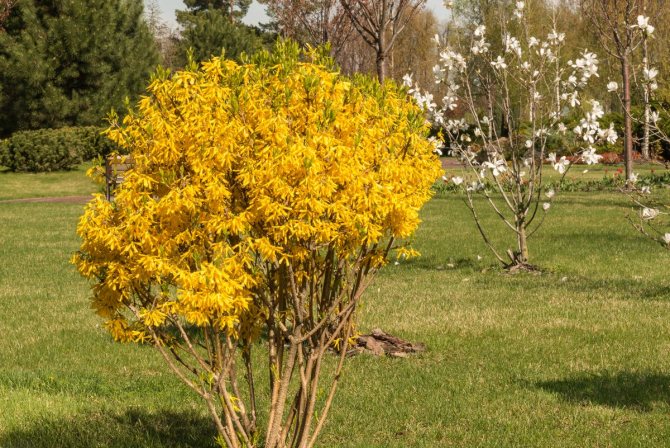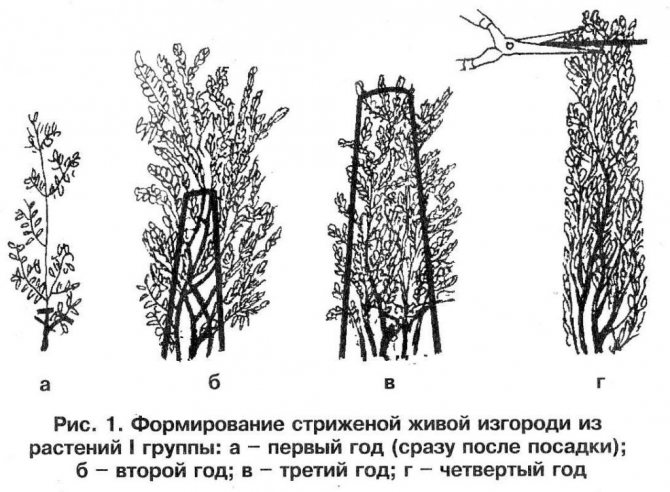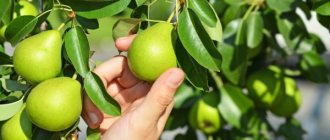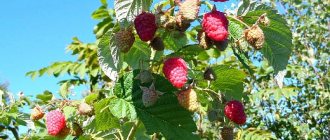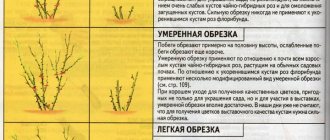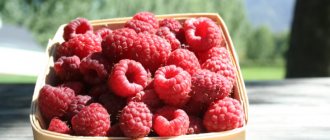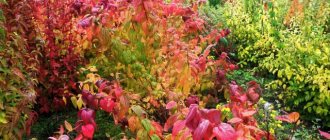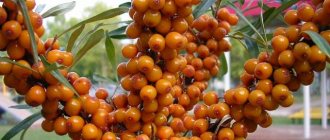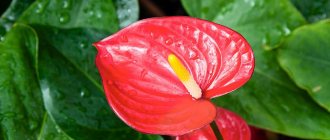Home »Garden and vegetable garden» Garden
Editor's Choice
Fruit TreesUseful InformationGarden
Olga Polyakova
1 comment

Trees and shrubs in any garden need regular adjustments to their direction of growth and thinning of the crown. Such procedures are necessary, since thanks to them the quality of plant life is significantly improved - the amount of green mass increases, the yield increases, etc.
Autumn pruning is an important stage in the formation of the crown of a plant, and any serious gardener considers this procedure a must. For most plants, formative pruning is done in the fall. This is necessary so that the plants have time to get sick and rest before the onset of spring.
Pruning greatly facilitates the winter period for trees, since there is less liquid in the branches and the likelihood of frostbite is significantly lower. However, gardeners will have to work hard to make the plants comfortable overwintering.
General questions about autumn pruning
Pruning is not only done to ensure a better life for the trees in the garden. In fact, this procedure solves in a complex the problem of wintering and further development of trees.
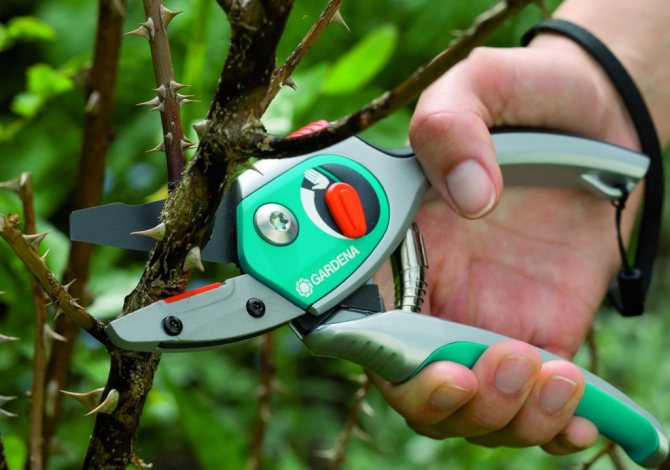

Pruner - a versatile tool for autumn pruning
For example, if the branches are too thick, then in winter there will be a lot of snow on the crown. This snow is capable of breaking the crown and in the spring you will have to actually perform the same pruning procedures, but also related to the treatment of the plant. Naturally, in such a situation, the issue of fruiting this year looks very doubtful.
On the other hand, you should not be too zealous when pruning fruit trees. It is common knowledge that properly pruned plants bear fruit very well. However, this does not mean that all plants, without exception, should be subjected to this procedure.
Some crops tolerate pruning very negatively (these include, for example, pear and cherry). These trees should be pruned no more than once every three to four years, and even then, using fairly gentle methods of thinning their crown.
There are more unpleasant cases when an excessive enthusiasm for pruning leads to the fading of the development of crops and then they are in the same state for quite a long time (from 1 to 5 years), in which their growth and volume of green mass do not change, and the yield may even decrease.
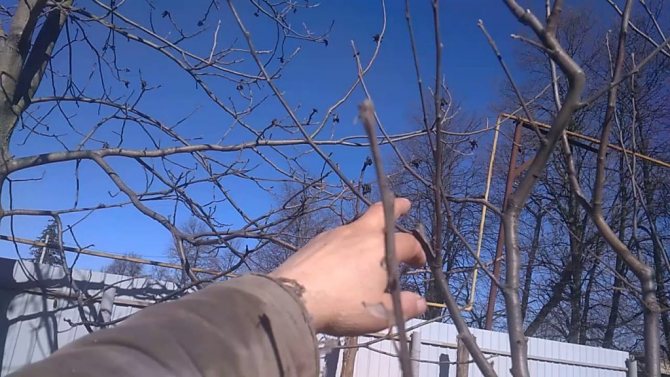

An example of incorrect pruning of an apple tree
Each crop has certain pruning characteristics that must be observed. It should be remembered that even within one species, the rules for trimming and shaping the trunk and crown may differ.
It should also not be forgotten that autumn pruning carries some sanitary burden. Dried, diseased and broken branches appear on trees not only during winter, but also during a warm period. Naturally, such phenomena in the crown require the fastest stopping.
In autumn, tree pruning is done in two ways:
- thinning (or cutting)
- by shortening (or trimming)
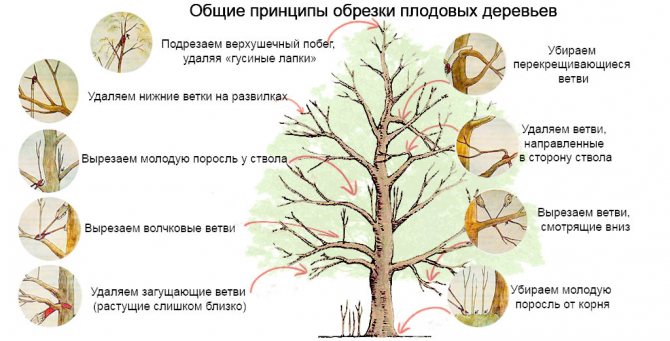

General principles of pruning fruit trees
In general, the pruning method and its intensity depend on the age of the plant and the degree of its density. Both of the above methods are often allowed.
Moreover, even for the same species, it is impossible to give an unambiguous recommendation., which of the pruning methods in which year of the tree's life should be used. Everything will depend on the density of the crown, the degree of its branching and the development of certain branches.
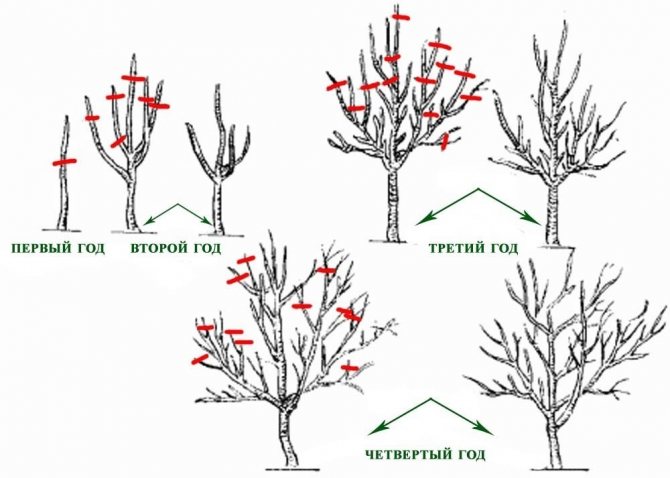

The combination of thinning and shortening when pruning plums at different years of life
back to menu ↑
See also: Growing blueberries in the garden: secrets of planting in the open field, reproduction and care (20 Photos & Videos) + Reviews
A few words about the history of topiary
Decorative shrub trimming, its other name "topiary", traces its history back to Ancient Egypt and Persia. In full force, the spread of this type of gardening art occurs in the 15th century. It was then that beautifully trimmed hedges became an adornment not only of French Versailles, but also of most of the palace gardens in Europe.
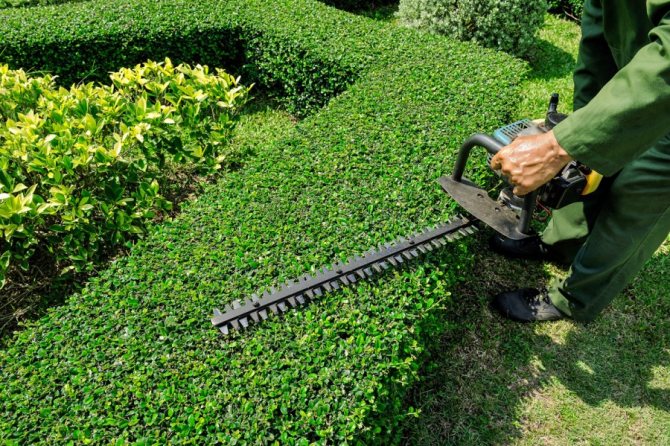

History knows a decline in interest in decorative haircuts, but today topiary is very popular all over the world. We are talking about both professionals and amateurs who seek to give an individual look to their own site.
A tandem of trees with a lush crown and clearly designed figures has come into fashion, which is considered the prerogative of the British style. Mature bushes and trees are already processed.
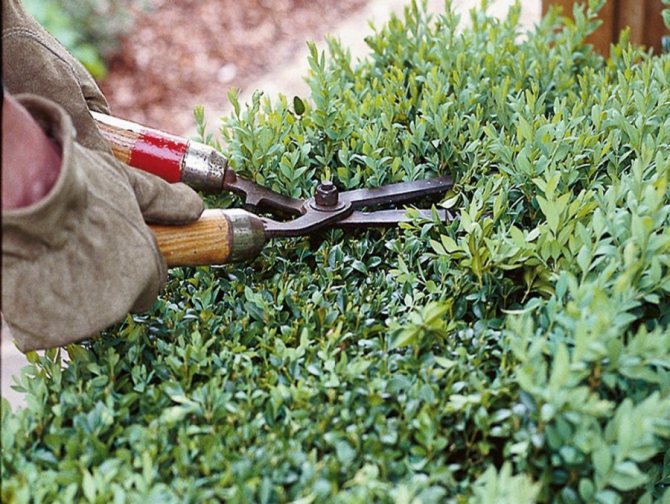

Technical implementation of pruning
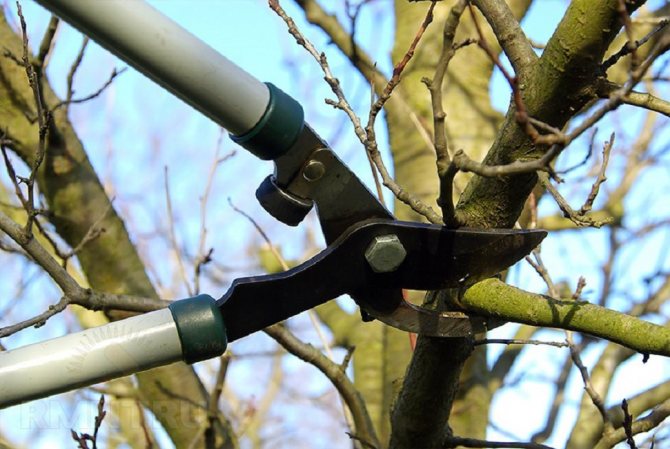

A quality tool is the key to success
Let's consider each of the trimming methods in detail with a description of some of the techniques used in them:
back to menu ↑
See also: How to prune grapes: in summer and autumn before sheltering for the winter | Instructions for beginner gardeners, schemes |
Thinning
Actually, it is this procedure that forms the crown, or rather its structure and direction. It consists in removing unnecessary branches from the crown. This category includes not only those branches that grow in the "wrong" direction, but also diseased, damaged, weak, and so on.
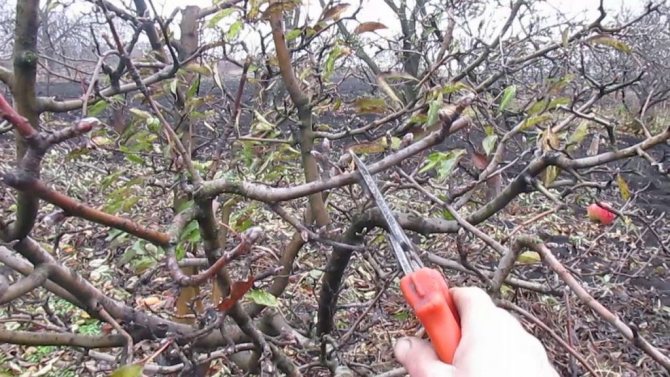

The central part of the crown of a tree in need of pruning
Weak branches, deformed, with traces of damage and trauma should be removed at the base, leaving no "hemp". In addition to its main task, this procedure allows you to provide good illumination of the inner part of the plant crown.
This approach has a very good effect on his life: in an overly dense crown on fruiting branches, fewer buds will be tied and the likelihood of infection of the plant with fungal infections will be significantly higher.
It should never be forgotten that the shortest path for fungus to penetrate any crop is in shaded, cool and humid places. Pruning can significantly reduce their number in tree crowns.
- Thinning can significantly improve the light and air content of the crown. This leads to an extension of the active phase of the warm season for the tree, when it blooms and bears fruit as efficiently as possible.
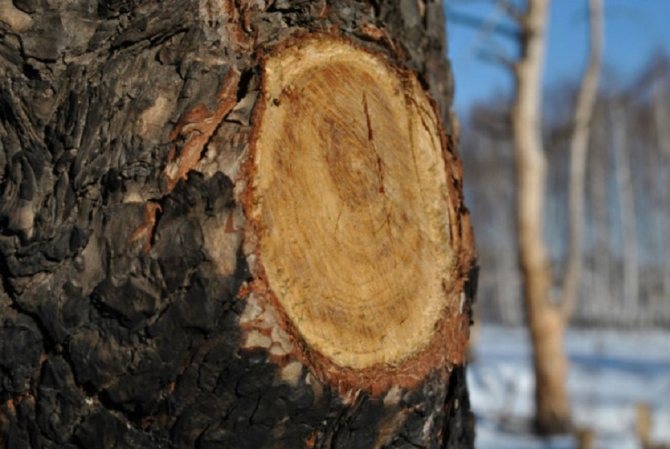

Ring cut
- If the branches are too ramified, they must be thinned out first; while the thickest branch is cut "into a ring", i.e. almost level with the bark of the trunk from which it grew. In this case, the plane of the cut should be parallel to the influx of the base of the branch.
If the crown was formed in advance and does not need to be adjusted, thinning is reduced to removing new branches and shoots of this year. A similar procedure, performed annually, will allow you to control the development of the crown in order to avoid uncontrolled growth.
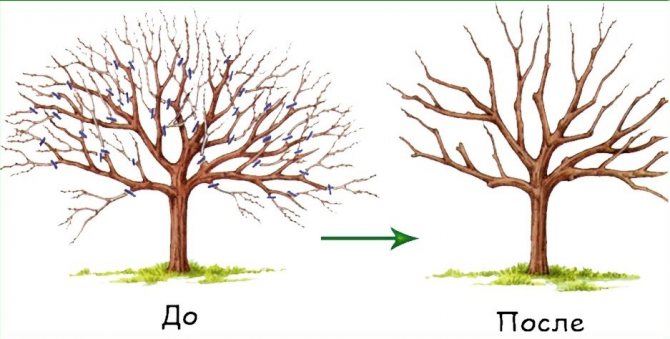

Thinning pears during autumn pruning
back to menu ↑
See also: Plastic bottles, what can be made of them? Useful DIY crafts: for home and summer cottages (60+ Photo Ideas & Videos) + Reviews
Shortening
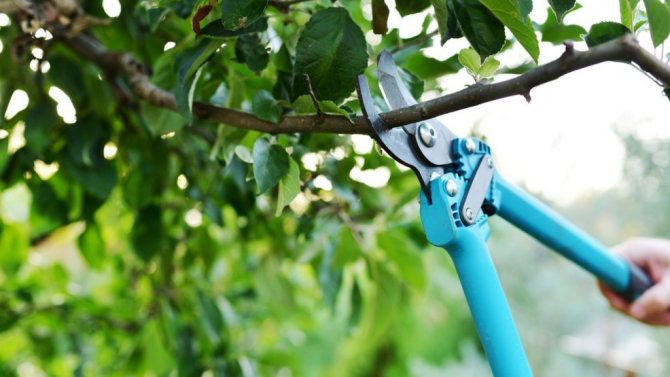

Pruning two-year-old shoots with a pruner
A much less radical method, however, depending on the intensity of its application, is able to control the development of a tree no worse than thinning. Shortening consists in the fact that individual branches are not completely removed from the trunk, but only the ends are cut off from them, where local growth cones are located.
There are two types of shortening:
- Strong... In this case, the branch is cut off by about half of its length.
- Weak... The branch is shortened by 1/3 of the length
Despite the relatively small difference, it is quite significant, since it is in 1/3 of the length of the branch (located closer to its end) that most of the generative buds are contained. Therefore, from the point of view of fruiting, both species are almost identical, but there is still a difference, and it is quite significant.
In the case of application of strong shortening in fruit trees, a significant growth of branches of the trimmed part is observed, however, the increase in the total green mass of the whole tree is reduced.
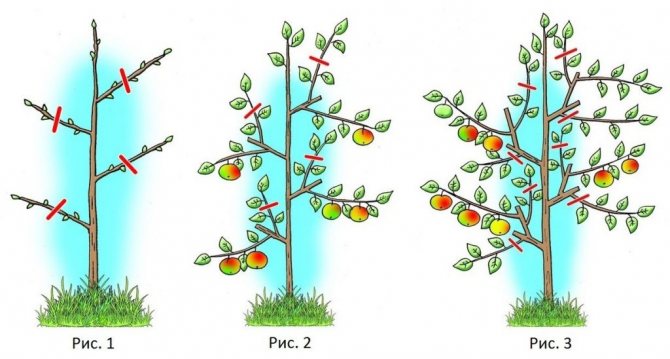

Strong annual pruning to increase apple yield
Moderate pruning results in poor growth in pruned branches, but significantly enhances branching. Objectively, a strong shortening also leads to branching, however, with it, this process manifests itself very weakly.
Sometimes a combination of both methods is used, or simply shortening the branches, in which each of them leaves an equal number of buds (for example, 3). Such pruning is most often used to update the entire crown, or in the event that a decision on its shape has not yet been made.
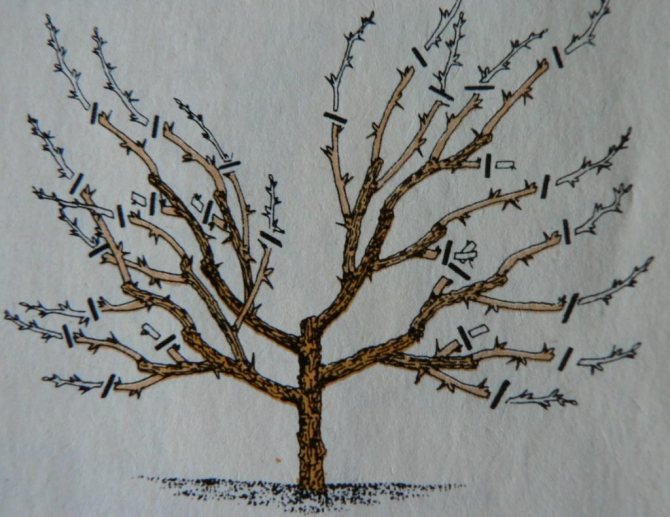

Combination of strong and weak shortening
This method is best used in the spring, since it will immediately be clear which of the buds have successfully survived the winter and are ready to form shoots.
Annual pruning of long, annual shoots on most fruit trees is highly recommended.
This approach provides shoots with the following advantages over non-shortened ones:
- their thickness increases significantly
- the degree of branching increases
- ringlets develop
- the rates of setting and formation of both vegetative and generative buds increase significantly
Shortening is more time consuming and complex procedure, however, it is she who leads fruit trees to increase yields.
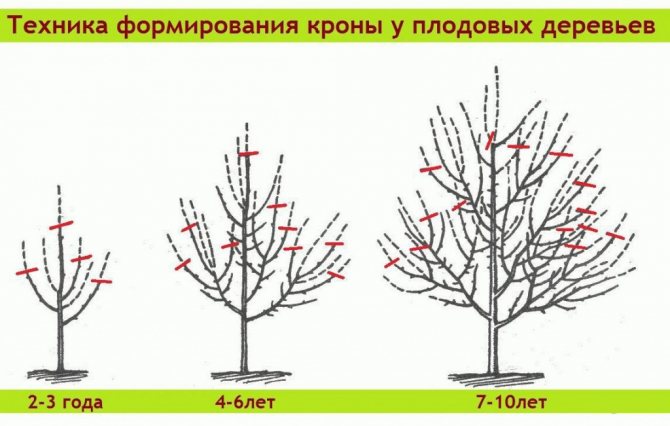

An example of shortening individual branches during crown formation, depending on the age of the tree
back to menu ↑
See also: Projects of country houses for 6-10 acres: 120 photos, description and requirements. The most interesting ideas
Mistake number 1: carrying out procedures with pruning shears before leaf fall
The experience of gardeners suggests that it is correct to prune garden trees after leaf fall. At this time, the dormant period begins in fruit. This means that the plants experience less stress, besides, the crown of the tree freed from the leaves is seen much better.
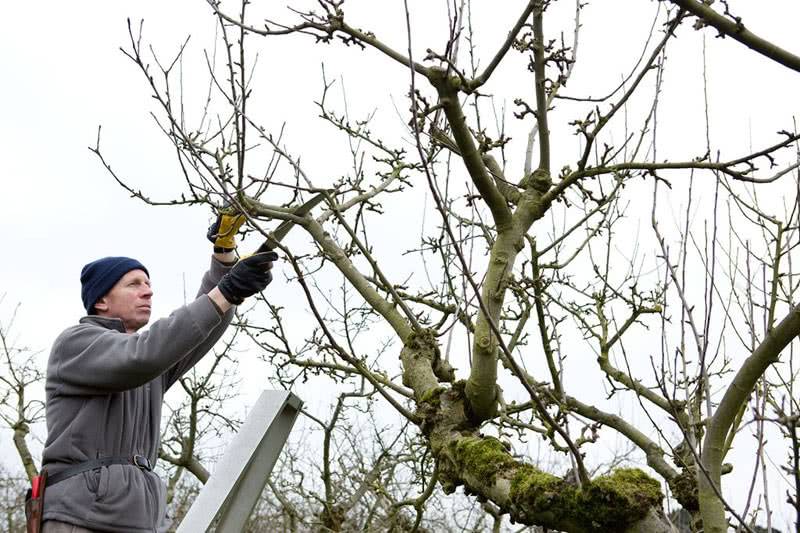

Experts recommend starting the autumn pruning of the garden after flying around the foliage.
Basic rules for pruning trees in autumn
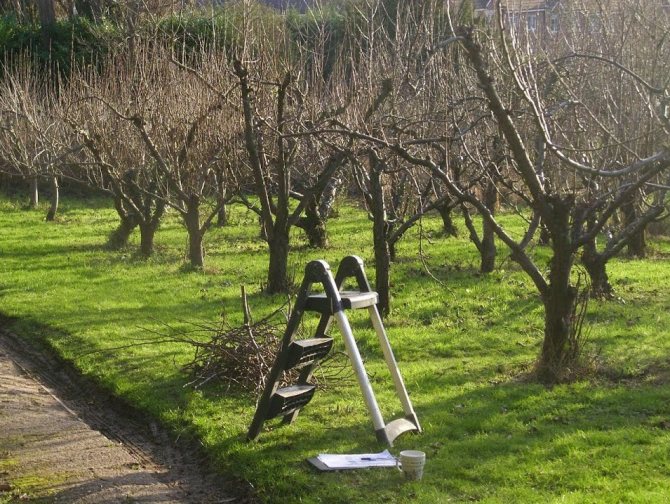

Autumn tree pruning in full swing
There are general guidelines on how to prune plants in the fall.
Let's consider some of the most common questions:
back to menu ↑
See also: Spirea: description of 12 popular species, planting in the open ground, care, features for different climatic zones including Siberia (80+ Photos & Videos) + Reviews
Working with large branches
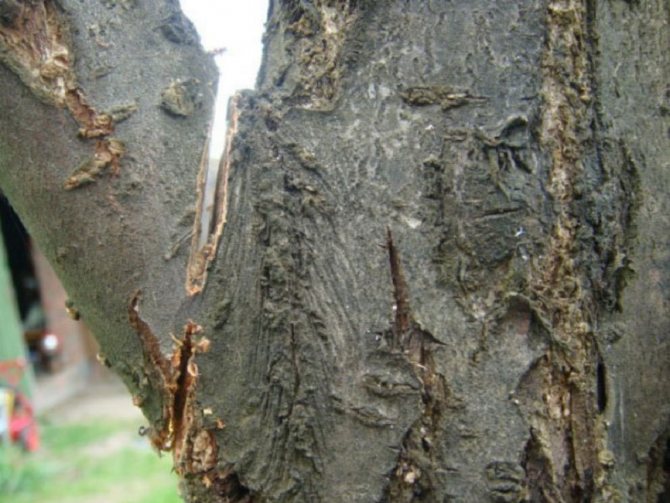

Cutting a thick branch correctly
Heavy or too thick branches should be removed with a garden saw. In this case, chips or too uneven cuts are not allowed. It is recommended to first cut the branch a little about 1/3 from the bottom, and only then completely cut it down from above. In this case, the branch must be supported by the free hand.
The wound should be carefully cleaned with a knife and treated with garden varnish. This significantly speeds up the healing process.
back to menu ↑
See also: How to plant an apple tree and care for it so that it bears fruit for many years: tips and tricks + Reviews
Annual branches
In the process of shortening annual branches, a cut should be made over a fully developed growth generative bud. This cut must necessarily pass obliquely from the opposite side from the apex of the kidney to its base.
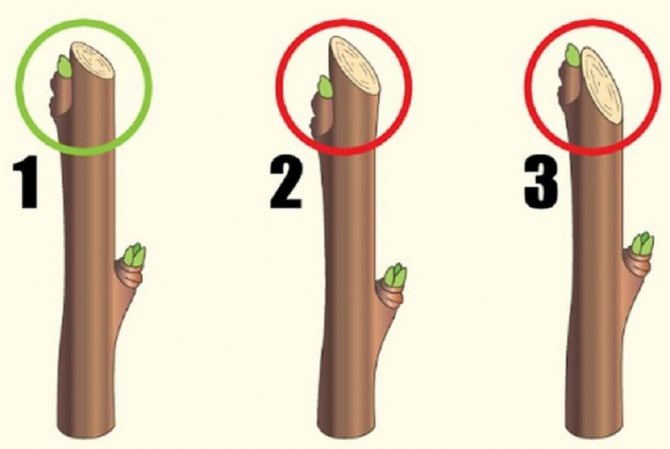

Correct (1) and incorrect (2 and 3) pruning of an annual branch under the bud
You need to cut it very accurately so that the stump is exactly at the level of the kidney.
Wherein:
- you cannot leave a stump over the kidney - the wound will heal for a long time
- it is also impossible to leave a stump under the kidney. Due to damage to the transport tissues, the kidney will weaken and eventually die
If there are no buds at a distance of 1/3 to 1/2 of the plant's length, then shortening should be done to the first bud located within this distance to the end of the branch. It is highly discouraged to shorten a branch more than 1/2 of its length.
In the case of complete removal of annual branches, the rule of "keeping only the strongest" should not be used. The main thing in formative pruning is to create a crown of the required shape.
The first year is not indicative of the successful growth and development of the branch; in the absence of “competing branches”, it is the branch remaining after pruning that will grow and develop rapidly for the next year.
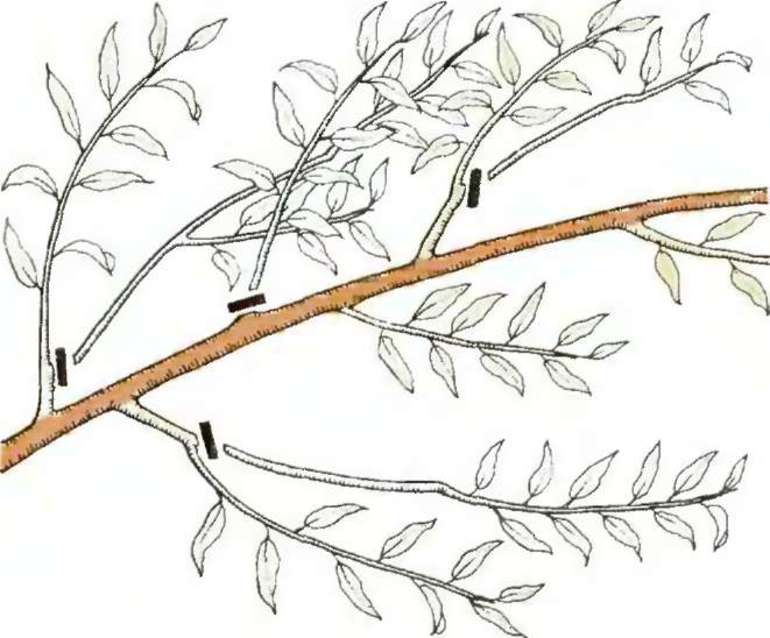

An example of pruning annual apricot shoots
back to menu ↑
See also: Children's menu for birthday (from 1 to 12 years old): recipes for meat dishes, snacks and all kinds of sweets
Thinning
In the case of thinning fruit trees, it is advisable to make circular cuts. In this case, the cutting of the removed branch is carried out along the influx at its base.
In no case should you leave the stumps, or, on the contrary, cut the branch too deep, "biting" into its mother branch. In some ways, this process resembles the formation of a hemp when shortening the annual shoots discussed earlier.


Dissolve on a tree trunk
If you leave a stump that is too long, it will surely begin to rot over time, which can lead to the formation of a hollow and the death, if not of the entire tree as a whole, then of its rather large branch, possibly even skeletal. And this is already a loss of about a third of the harvest.
Moreover, a hollow from a hemp appears literally in the 2nd year, in a branch it can completely rot in another 2-3 years. That is, it is highly undesirable to start the process, but it is best not to allow it at all.
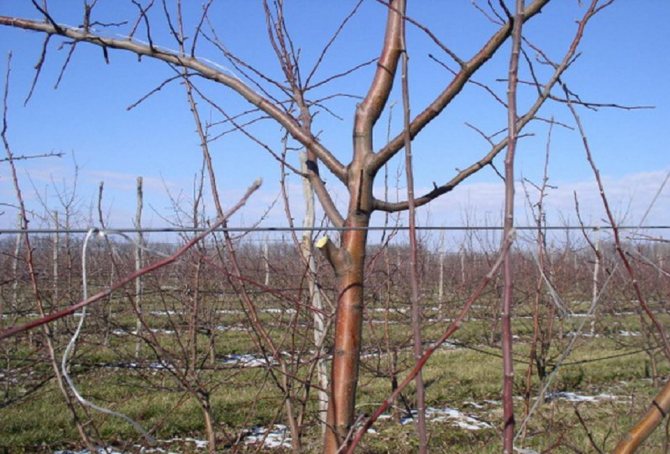

Too long stump - the reason for the appearance of a hollow
A deep cut in the parent branch can lead to even more unpleasant processes. In the best case, it will overgrow for a long time, but, most likely, it will also begin to rot with the formation of a hollow and the final death of the entire branch.
If the stump is formed correctly, and also immediately after the saw cut, it is treated with garden pitch, then the cut will be delayed after 1 year.
back to menu ↑
See also: We make vertical beds with our own hands: the best ideas of 2019. For vegetables, berries, herbs and flowers (65+ Photos & Videos) + Reviews
Pruning old branches
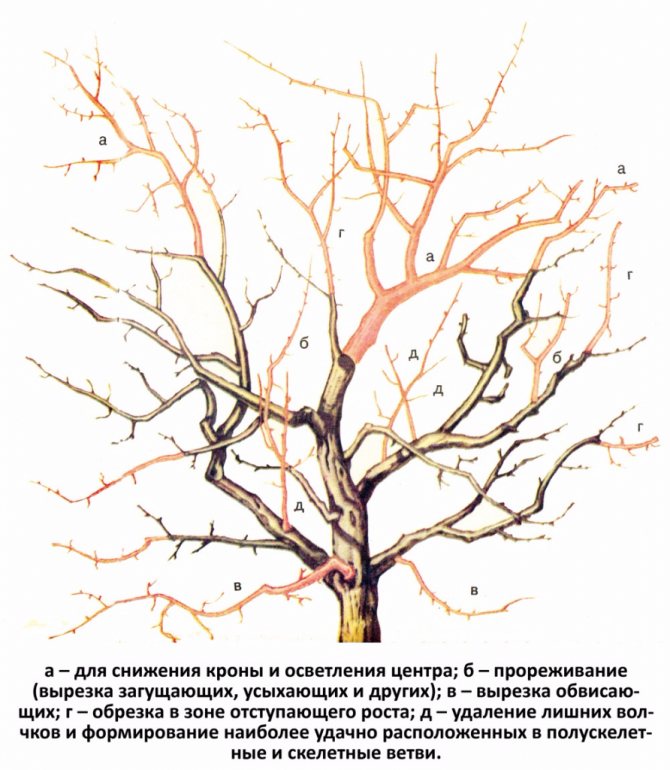

Trimming scheme
This procedure is performed quite rarely, since most often the complete removal of the old branch is performed. Nevertheless, it can also occur, since sometimes branching of young shoots becomes ineffective (for example, they are mainly located in the shady zone of the plant, or the branches from which they grow were injured, etc.)
In this case, the shortening is performed using a cut above the lateral or just a well-developed branch. The cut itself is necessarily located above the branch and has a slight bevel.
back to menu ↑
See also: How to make garden paths in the country with your own hands? (80+ Photo options for great ideas) + Reviews
Working with slices
Any cuts heal and tighten more quickly if they have smooth, not torn edges. In addition, it is desirable that the entire cut lies in the same plane.
To ensure the latter, you can use a high-quality saw, and clearly measure and mark all directions of cuts on the branches. Well, of course, the saw cut itself should be as even as possible.
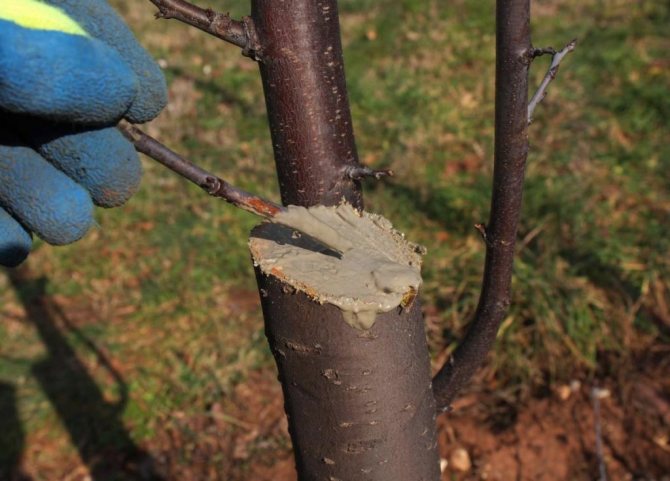

Processing a cut with a garden pitch
The evenness of the cut edges is achieved by processing them with a garden knife. It is advisable to "bring" not only the place of work of the saw, but even small branches that were cut off with a pruner.
When the pruner is working, it is necessary that its blade always passes from the bottom of the cut branch, to the clamping part is located on top.
back to menu ↑
See also: Hunting belt for fruit trees from garden pests: description, types of belts, DIY making + Reviews
Using a garden var
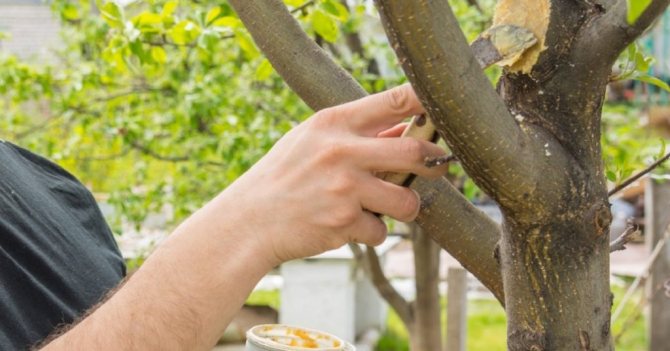

How to use garden var
It is recommended to treat all wounds with a diameter of more than 10 mm with garden varnish.
The use of an alternative material in the form of oil paint is allowed, however, this can significantly (up to two times) increase the healing time of the slices, therefore this method is recommended for young trees or annual shoots.
back to menu ↑
See also: Growing garden blackberries - a description from buying a seedling and planting it in open ground to leaving and harvesting from the Moscow region to Siberia + Reviews
The final stage of pruning
After the end of the pruning, it is necessary to destroy all the pruned branches. The best way is to burn them at the stake with further processing into wood ash.
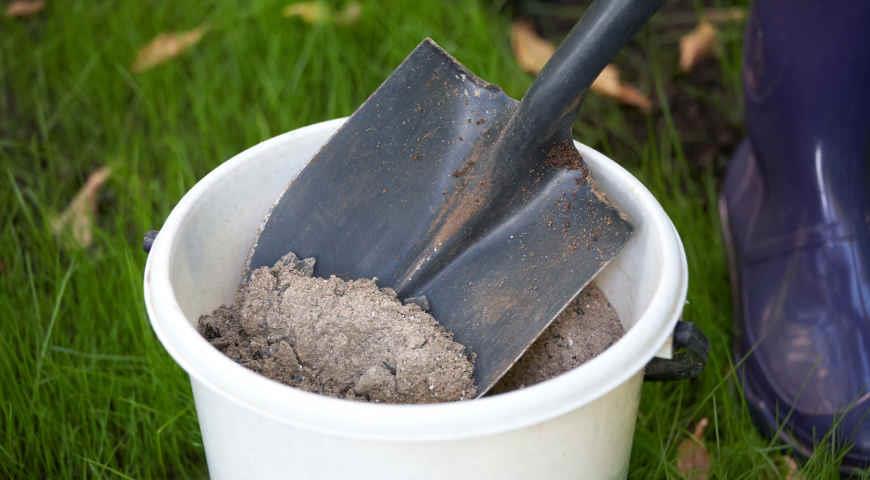

Wood ash obtained from scraps can be used as fertilizer
Branches of trees should not be burned together with fallen leaves.
If the burning of cut wood material is for some reason impossible, it should be completely collected and removed from the site.
The working parts of the tool with which the pruning was done must be disinfected so that there are no possible traces of fungus or parts of wood infected with any diseases on them.
The disinfectant can be, for example, kerosene.
back to menu ↑
See also: Shelves in the garage: order first. General design issues, simple options, step-by-step instructions for making your own hands (75+ Photos & Videos) + Reviews
How to trim your hedge yourself?
What will the hedge look like in the future, depends on correct shaping in the first year, after her disembarkation. Therefore, the correct formation of the hedge must be started soon after disembarkation.
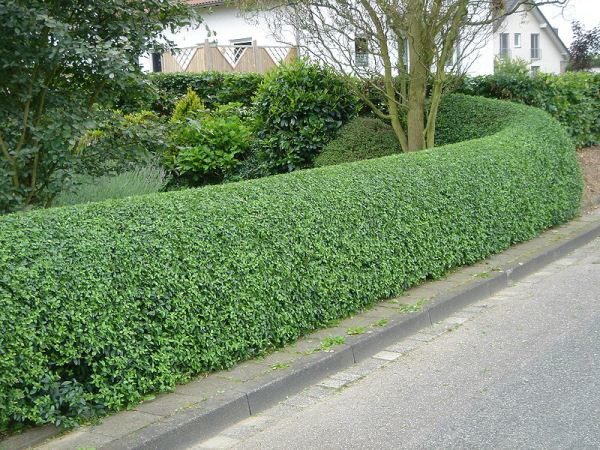

Privet hedge
Many amateur gardeners do not cut young shrubs for the first few years, but this is wrong. To exclude a large upward growth of the plant, correct pruning must be carried out in the first year of life.... This will stimulate good formation of new root growth. If this is not done, the bottom of the hedge may be exposed, and the top will be thickened.
Many plants that are used for hedging, such as hawthorn, snowberry, privet, comb and mirabelle, are erect. Therefore, they especially require good pruning soon after planting.
Cut all plants shortly after plantingleaving shoots no more than 15 cm above the ground. This will stimulate the regrowth of powerful young basal layers.
The next year, another strong pruning of the plant must be done. This will ensure the correct formation of the dense crown. If the density of the shrubs seems to you insufficient, you can carry out a strong pruning again next year..
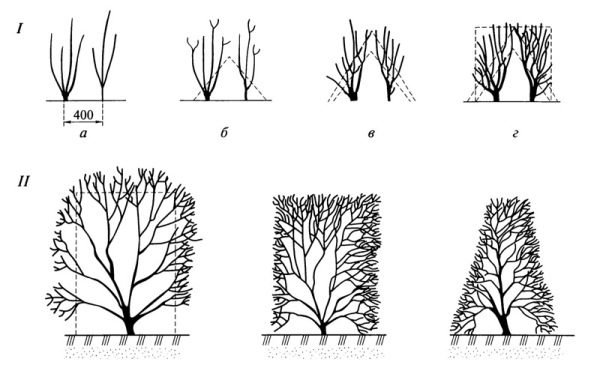

The scheme of the formation of a hedge
Third and further yearswhen the formation of a strong root growth ends, only cosmetic decorative pruning of plants is needed. The interval between pruning depends on the type of plant and a little on the weather conditions.
Spiral
This element is very effective, but also quite challenging. It can be used on shrubs that have a conical shape. There are two ways to trim the plant so that you get a spiral:
- Using a regular tape that needs to be wrapped around the crown. The parts of the plant located between the turns are clipped. Great care is needed here.
- Another method is carried out using a stick, which is inserted into the ground at a close distance from the bush and tied to it. You need to take the rope, fix it at the very top of the stick and lower it in a spiral down. The shoots must be cut to the trunk, which is considered the main one, observing the shape outlined by the rope.
Cone
This shape is the easiest to crop. It will be easier to give it to a plant if it has a conical shape by nature. The haircut should be started from the crown, from its top, gradually going down. To make the cone proportional, use poles. They are placed next to the trunk on four sides, and the tops are collected slightly above the crown. It turns out a pyramid. Those branches that have gone beyond its contour are cut off. This geometric shape is suitable for barberry, juniper.
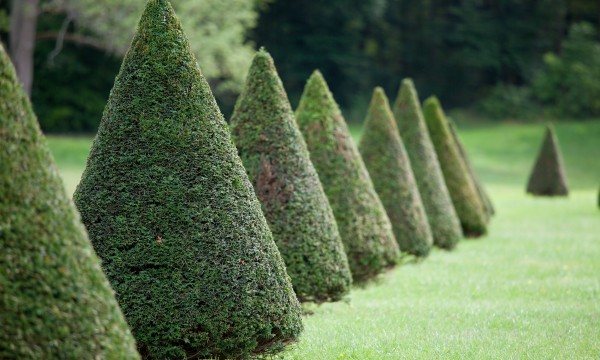

Gardening Tools
Important! For gentle and easy pruning, special tools must be used. The main tool for removing branches is the pruner.
This tool is divided into 2 types:
- With a curved blade. His job is to cut thick shoots evenly;
- With a straight blade. The blade of the tool rests against the butt of the plant.
The pruner is very effective in its work, however, the negative point in this tool is that it is impossible to cut the hard-to-reach places of the bush.
A garden saw is useful when it is necessary to rejuvenate shrubs and remove branches that are more than 5 cm thick. The saw teeth are sharp and large enough (6-7 ml long), which makes it easy to cut thick branches.
To carry out the work on pruning hard-to-reach shoots, gardeners use a delimber. This tool can easily cope with thick branches, it is easy to work with it in a lush crown.
To choose good tools that will be effective helpers in the garden, pay attention to the following characteristics of the tool:
- it must be quite sharp to cut the shoots smoothly;
- safe to use;
- convenient to use;
- the weight of the tool should be small, but capable of withstanding significant efforts from the gardener;
- it is advisable to choose a handle painted in a bright color so that the tool can be easily found among the grass.
Important! Also, for trimming hedges, it is advisable to purchase garden shears that most effectively cope with this task. When stripping and removing various problem shoots, a garden knife will be of significant help.
The ratio of shoots on an artisanal plant
For the growth of the branches of shrubs, 5-6 years are given, after this period it is advisable to cut them off. Therefore, it is important to know what the ratio of shoots by age has a shrub. In order to determine the age of the branches, you can use the method of counting the inner rings that are observed during the cross section. The number of rings indicates how old the plant is. Usually, all shrubs have 4-5 annual branches, two-year-olds - 3-4, three-year-olds, four-year-olds and five-year olds - 2-3.
It is worth noting! It is necessary to remove shoots not only according to their age, but also according to the physiological state, appearance and direction of growth. Accordingly, the above relationship may vary.However, changes in the number of branches and their age does not mean that the bush has an irregular shape.

